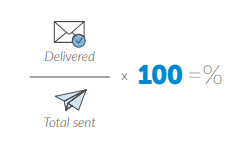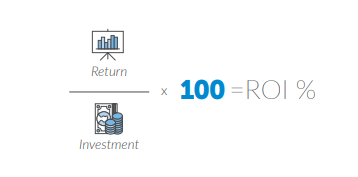
To know if your campaigns are profitable or not, you need to calculate your SMS marketing ROI. Below we explore the key metrics you need to know, how to calculate them and optimise for success.
As a marketing channel, SMS is difficult to beat. It’s low cost and almost everyone has a mobile phone, even if they’re not connected to the internet.
You can also be highly-targeted in your communications by segmenting your audience and personalising your message greetings – so it’s a great way to engage people with special offers, whether it be on their birthday, Black Friday or Christmas. Or simply because they’ve not bought from you in a while.
Like any communication channel though, it’s important to know your SMS marketing ROI so that you can monitor its effectiveness and take steps to improve it.
Why measure SMS marketing ROI?
SMS might be one of the cheapest forms of communication – but, if you don’t measure the impact of your campaigns, you may not get the returns you’d hoped for.
Even if you achieve a positive ROI, there are likely to be more opportunities to make improvements and drive down the cost per conversion further. Just small tweaks to the message copy, the time you send it out and frequency could make a real difference to conversion rates and costs.
Understanding the ROI of your SMS marketing also gives you a much better idea of where to spend your marketing budget in the future. You’ll see which campaigns have worked best so you can replicate them or improve on them.
Ultimately, you need to be able to clearly demonstrate how your campaigns support both your marketing and organisation’s goals.
Recommended reading: SMS marketing: How to unlock the power of SMS
What goals should I set?
To get the most from your campaigns, and avoid costly scope creep, set out clear goals from the start.
Every organisation has its own objectives, of course. If you work in the public sector, your goals are likely to be around engagement and actions, such as whether people turn up for appointments, or use the services you provide.
If you’re in the private sector, your goals will be more revenue-oriented – for example by turning casual browsers, in store or online, into paying customers and loyalty card holders.
Broadly speaking, your SMS campaign goals can be grouped into the following four categories:
- Higher profits
- New customer acquisition
- Brand awareness and loyalty
- Data collection
These goals usually align with wider business objectives, which may include organisational growth, expansion into new markets or territories, and product diversification.
It helps to then outline a set of metrics that will help you to stay on track to achieve these goals.
So, to measure the profitability of your campaign, you could look at sales and the profit per promotion (e.g. the number of people who took up a Black Friday deal). For new customer acquisition, you might track the number of leads, the proportion of conversions per lead, and the cost per lead.
Common ways to measure brand awareness include monitoring the number of visits to your website (including specific pages), and the number of new subscribers to your email newsletter and social media channels. For your data collection goals, you could look at the number of responses, the quality of the data and the number of people who’ve opted out.
When should I measure SMS ROI?
With the right SMS platform in place, it’s easy to continuously monitor the effectiveness of your campaigns and to refine and optimise them.
For example with Esendex you can see straightaway how many messages have been delivered versus how many have failed and what your overall open rate is.
Remember, failed messages are still charged for, which will hit your ROI, so take every opportunity to cleanse your database so you only have accurate numbers.
The average open rate for SMS is up to 98% – so if yours is significantly lower, it could indicate that the content of your message isn’t relevant or personalised enough, or you haven’t targeted the right customer segment. Again, this insight can help you to improve your communications in the future.
If you offer a discount code for a flash sale taking place over the weekend, or you’re hosting an event, you might look at how many times the voucher has been redeemed and how many people attended.
All these metrics can be measured over the longer term too, helping you to understand the effectiveness of SMS as a marketing tool on a quarterly, annual or five-year basis.
How to calculate ROI in SMS marketing
Once you’ve settled on your metrics, it’s time to work out the ROI. Calculating this is relatively straightforward because all of your data should be easily accessible via your chosen SMS platform.
Here’s how to calculate your ROI based on three key metrics:
Delivery rate
To calculate delivery rates, simply divide the number delivered by the total sent and multiply by 100. This will give you a percentage – the higher it is, the better the ROI. To find the number of sent and delivered messages on our messaging platform, click ‘Sent items’ in the taskbar and then choose ‘Batches’.
Only text messages that land successfully in recipients’ inboxes can be read and actioned, so your campaign hinges on high delivery rates. This is why it’s important to choose a bulk sms provider with high delivery rates, to give your campaign the best chance of success.

Conversion rate
Conversion covers many things – from the number of people who signed up to a newsletter or downloaded a document, to how many people made a purchase. The term ‘conversion’ might be less widely-used in the public sector but you can still usefully use this formula to calculate, for instance, the number of people who attended appointments or events.
The conversion rate is the number of people who took action, divided by the number of SMS recipients, multiplied by 100.

Cost per conversion
Our final calculation tells you what the monetary returns on your SMS marketing has been – a useful way to measure both your campaigns and SMS success.
This involves dividing the number of returns achieved (e.g. appointments booked, sales generated, discount codes used) with the cost of delivering all of the text messages as the formula below shows.

These calculations only work if your data is accurate and up-to-date. Similarly, make sure your goals are defined and your metrics consistent to ensure consistency.
The data you get can be used to not only inform future campaigns and for reporting but can also support A/B testing, such as by varying the content or the time the message is sent to see which performs best.
Maximising your SMS marketing
SMS might be incredibly cost-effective and direct but like anything else, you need to demonstrate its value and secure buy-in from stakeholders.
Tracking its ROI over the long-term, and for specific campaigns, gives you a good idea of what’s working and where to make improvements.
To get started with your SMS marketing campaigns, speak to an expert or read our SMS marketing guide to learn more.



